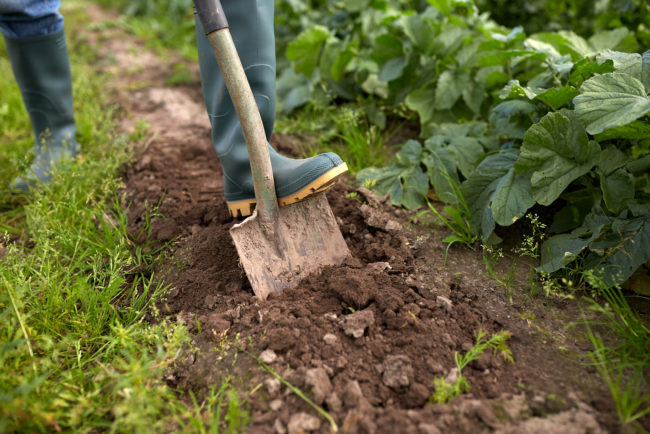Geographic farming is old school. In fact, it harkens back to the days when NAR was known as National Association of Real Estate Exchanges and MLS listings were printed out in a huge book that agents lugged around with them.
But, that doesn’t mean it doesn’t work.
Done right, geographic farming can be a game changer, a time saver and a money maker.

“Know your crop first, then select the farm”
Apparently, that’s a rule of farming, according to Ben G. Bareja at cropsreview.com.
“The first part in the planning stage before site selection is to learn everything about the crop to be grown,” he suggests. He goes on to mention that crops are generally chosen for their profitability.
In real estate farming, the “crop” is the type of lead you want to grow. Typically, in geographic farming, the target is homeowners who want to sell or tenants looking to buy.
Ok, you have a crop

Now it’s time to choose a farm. Many agents choose their own neighborhood, or one close by. Settle on several and then determine each “site’s” profitability.
Who lives there? You’ll need to know as much as you can about the local homeowners before choosing one specific geographic area.
- What is the typical tenure of homeowners in your town?
- Are they primarily retirees, families with kids or singles?
- How much money do they make?
- What percentage of renters spend 30 percent or more of their incomes on housing?

Display your local authority with farm pages on your LeadSite! Learn more here.
As of 2018, the median duration of homeownership in the U.S. is 13.3 years according to Chris Moon at valuepenguin.com. But, tenure also differs by demographics. Younger homeowners (those 36 years of age and younger), remain in their homes, on average, for six years, according to NAR’s 2017 Home Buyer and Seller Generational Trends Report.
Tenure also may vary by city. Homeowners in Seattle, for instance, stick around longer than those in Denver.
Consult the Census Bureau’s website to find out how long folks stay in their homes in a particular ZIP Code.
We chose a ZIP Code at random (turns out it’s for Merrillville, IN) and found that the largest share of homeowners purchased their homes between 2000 and 2009 and another big chunk of them purchased more recently, from 2010 to 2014.
Then, consider the size of the farm. New agents lacking a hefty marketing budget may want to start small. More established agents should consider going with Tom Ferry’s advice of starting with 250 to 500 homes “and then expand as saturation and desired ROI is accomplished.”
It’s time to plant

It takes a bit of nurturing to bring a crop from seed to harvest, so map out your plan of action. Snail mail is the most obvious delivery method, but what will you send? Whatever you decide on it has to deliver on two fronts:
It must offer value to the recipient and it must establish you as the area expert
Homeowners love to hear how the local housing market is doing, what’s sold and for how much, so a market recap may be the ideal first mailer.
Then, consider just-listed, just-sold postcards. One agent we know even sends postcards when a home goes under contract. She mentions how quickly homes are snatched up and that there’s high demand for homes in the area.
Case studies (or success stories, if you will) deliver concrete evidence of your expertise. Check out this one for Jolenta Averill, broker-owner of Lake & City Homes Realty in Madison, WI.
Be consistent and persistent with geographic farming
“To be a successful farmer you must commit to an area and understand that it’s a marathon, not a sprint,” claims real estate coach Kay Fairchild at tomferry.com.
Consistency is key when it comes to successful farming. Just as the guy or gal who grows our tomatoes would get deplorable results by watering only once in a while, so too will you bomb out if you aren’t consistently nurturing your farm.
For more tips on farming your way to success, download Easy Agent Pro’s Ebook, Real Estate Farming & Prospecting.
LeadSites is a real estate website designed to help your business grow. Learn more, and see how LeadSites can work with your current business plan to get you where you want to be.
What the top 10 real estate website know that you don’t: build a better website with these tips.
Learn how to use IDX searches to grow your business:
The post Old McAgent has a farm – do you? appeared first on Easy Agent Pro.
from theokbrowne digest https://www.easyagentpro.com/blog/lead-generation/geographic-farming/
No comments:
Post a Comment